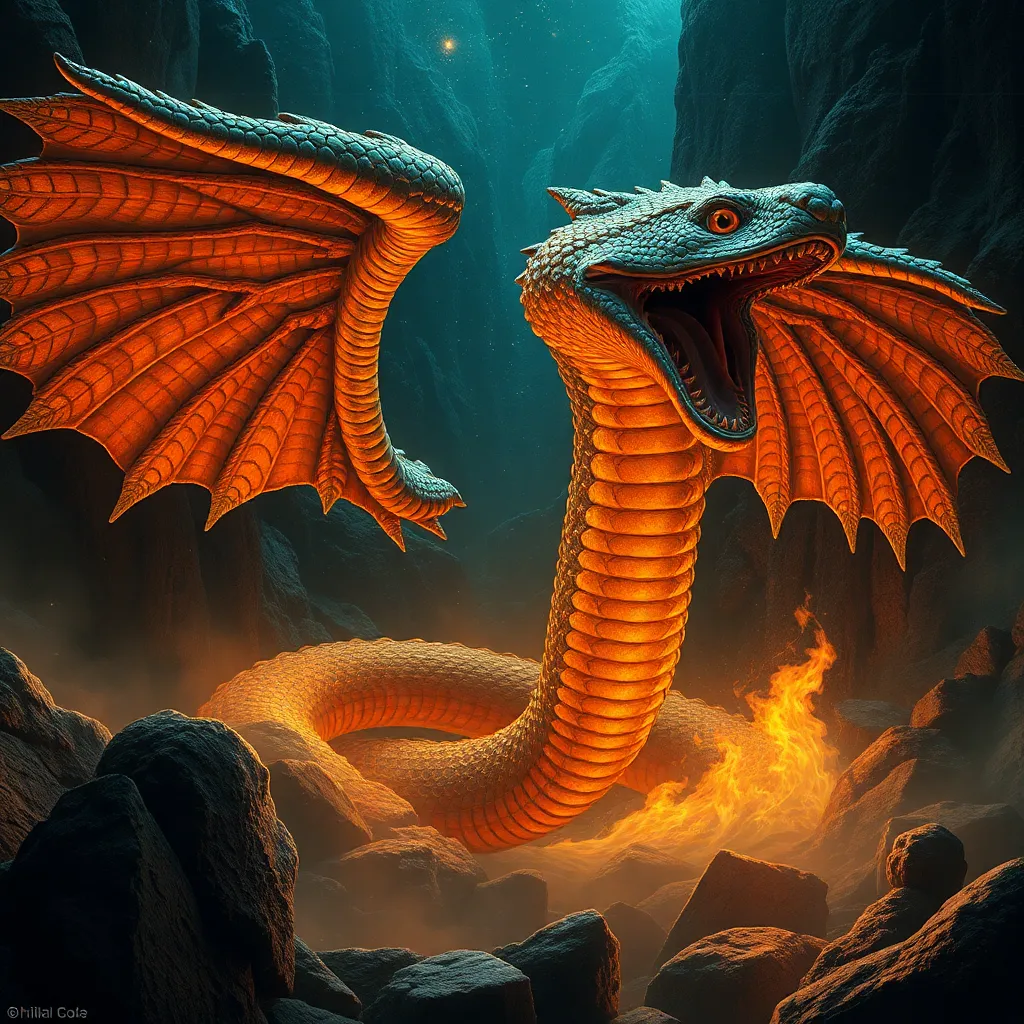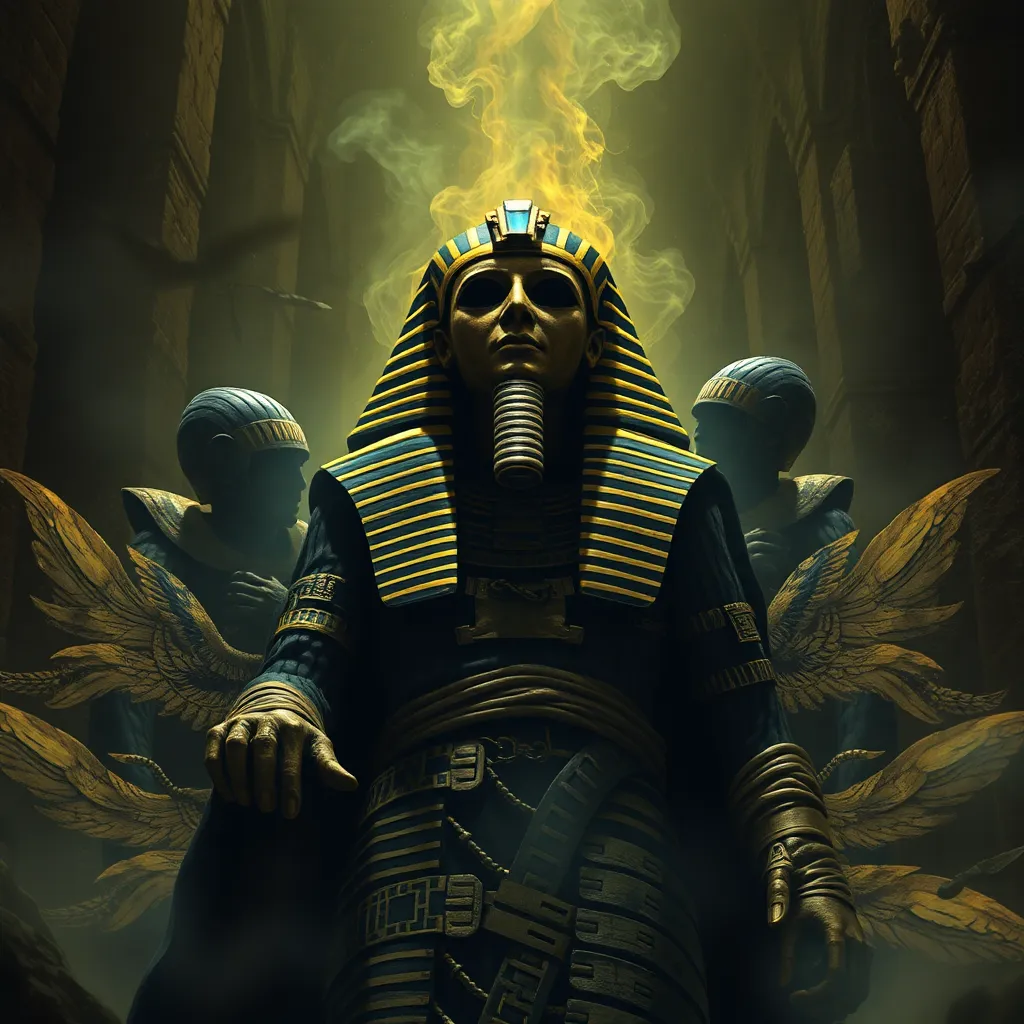Inuit Gnomes: The Sila and the Spirits of the Arctic
I. Introduction
Inuit mythology is rich and complex, representing a tapestry of beliefs, traditions, and a profound connection to the Arctic environment. Among the intriguing aspects of this mythology are the gnomes, often seen as protectors and guides within the natural world. One of the fundamental concepts tied to these mystical beings is ‘Sila.’ This term not only shapes the Inuit understanding of the universe but also emphasizes the intrinsic link between the spiritual and natural realms.
II. Understanding Sila
A. Definition and meaning of Sila in Inuit belief
Sila is a multifaceted term in Inuit culture, often translated as ‘the wind’ or ‘the weather.’ However, its meanings extend beyond mere meteorological phenomena. Sila encompasses a broader understanding of the life force that animates all things, connecting the physical with the spiritual. It is the breath of life that sustains the environment and influences every aspect of existence.
B. Connection between Sila and the natural world
Inuit people view Sila as a dynamic force that interacts with the natural world. It represents the rhythms of nature—seasonal changes, animal migrations, and the cycle of life and death. The Inuit believe that the health of Sila directly impacts the well-being of the ecosystem, making it essential to respect and live in harmony with the environment.
C. Sila as a guiding force in Inuit life and spirituality
Sila is not just a concept but a guiding principle for Inuit spirituality. It teaches the importance of balance, respect, and interconnectedness. In practical terms, this means that Inuit communities strive to align their practices—hunting, fishing, and gathering—with the rhythms of Sila, ensuring sustainability and reverence for the land.
III. The Role of Spirits in Inuit Culture
A. Overview of the spiritual landscape in Inuit traditions
The spiritual landscape of Inuit culture is populated by numerous spirits that inhabit the natural world. These beings are often viewed as guardians of the land, animals, and people. They play a crucial role in the daily lives of the Inuit, influencing everything from hunting success to personal well-being.
B. Types of spirits recognized by the Inuit people
- Animal Spirits: Each animal is believed to possess a spirit that must be respected and honored.
- Elemental Spirits: These include the spirits of water, wind, and earth, each representing different aspects of nature.
- Ancestral Spirits: Deceased family members are believed to watch over their living relatives, providing guidance and protection.
C. The interplay between the physical and spiritual realms
The Inuit worldview emphasizes a seamless connection between the physical and spiritual realms. Events in the natural world are often interpreted as reflections of spiritual occurrences. For example, the behavior of animals may be seen as messages from the spirits, guiding hunters in their pursuits.
IV. Characteristics of Inuit Gnomes
A. Description and physical attributes of Inuit gnomes
Inuit gnomes, often referred to as ‘little people’ or ‘land spirits,’ are depicted as small, elusive beings who inhabit the wilderness. They are typically described as having features that blend human characteristics with those of animals, reflecting their deep connection to nature. Their appearances can vary widely, but they are often portrayed with long hair and wearing clothing made from natural materials.
B. Symbolism and cultural significance of these mystical beings
Inuit gnomes symbolize the harmony between humans and nature. They serve as reminders of the importance of respecting the land and its resources. They are often invoked in stories and folklore to teach lessons about humility, gratitude, and the consequences of one’s actions.
C. Comparison with gnome folklore from other cultures
While the concept of gnomes exists in various cultures, Inuit gnomes differ significantly from their European counterparts. In many Western traditions, gnomes are depicted as garden guardians or treasure keepers, often leading to whimsical interpretations. In contrast, Inuit gnomes are deeply rooted in spirituality and the Arctic environment, embodying the essence of survival and respect for nature.
V. Sila and the Environment
A. How Sila influences the Arctic ecosystem
Sila plays a pivotal role in shaping the Arctic ecosystem. The changing weather patterns, driven by Sila, affect animal migrations, plant growth, and overall biodiversity. The Inuit understanding of Sila allows them to adapt their hunting and gathering practices according to the changing environment, ensuring their survival in this harsh landscape.
B. The relationship between Inuit gnomes and natural phenomena
Inuit gnomes are often associated with specific natural phenomena, such as the northern lights or sudden weather changes. Their presence is believed to signal changes in the environment, and they are called upon in rituals to seek guidance and protection from adverse conditions.
C. Environmental teachings derived from Sila and its spirits
The teachings of Sila emphasize the importance of environmental stewardship. Inuit stories often convey lessons about the consequences of overexploitation, underscoring the need to maintain balance within the ecosystem. These narratives serve as vital reminders for contemporary society as well.
VI. Sila in Contemporary Inuit Life
A. The relevance of Sila in modern Inuit communities
Even in contemporary times, the concept of Sila remains relevant within Inuit communities. Many individuals draw upon traditional teachings as they navigate the challenges of modern life, seeking guidance from Sila to find balance and purpose.
B. Preservation of traditional beliefs amidst globalization
The rapid pace of globalization poses challenges to the preservation of traditional Inuit beliefs. However, many Inuit actively work to keep their cultural heritage alive through education, storytelling, and community engagement, ensuring that the teachings of Sila and the significance of gnomes continue to be passed down.
C. Contributions of Inuit gnomes to contemporary art and storytelling
Inuit gnomes have found their way into contemporary art and storytelling, serving as symbols of resilience and cultural pride. Artists often incorporate gnome imagery into their work, reflecting the enduring connection between the past and present. These expressions not only celebrate Inuit culture but also educate others about the richness of their traditions.
VII. Challenges Facing Inuit Spirituality
A. Impact of climate change on Arctic traditions
Climate change poses a significant threat to traditional Inuit practices and beliefs. As the environment shifts, the patterns of animal migration and seasonal cycles are disrupted, making it increasingly difficult for Inuit communities to maintain their way of life.
B. The struggle for cultural preservation and identity
Inuit communities face the ongoing struggle to preserve their cultural identity in the face of external pressures. The loss of language, traditions, and connection to the land can erode the spiritual foundations of their communities, leading to a disconnection from Sila.
C. Efforts to revitalize and maintain Sila beliefs
In response to these challenges, many Inuit are engaging in efforts to revitalize and maintain their spiritual beliefs. This includes educational programs, community gatherings, and initiatives aimed at fostering a deeper connection to the land and its teachings.
VIII. Conclusion
Inuit gnomes and the concept of Sila represent a vital aspect of Inuit spirituality, emphasizing the interconnectedness of all things in the Arctic environment. Understanding and appreciating these beliefs offer valuable insights into the resilience and wisdom of Indigenous cultures. As we reflect on the enduring legacy of Inuit spirituality, it is crucial to foster greater awareness and appreciation for these traditions, recognizing their significance in the face of modern challenges. By honoring the teachings of Sila and the spirits of the Arctic, we can contribute to a more respectful and sustainable relationship with the environment and Indigenous cultures.



